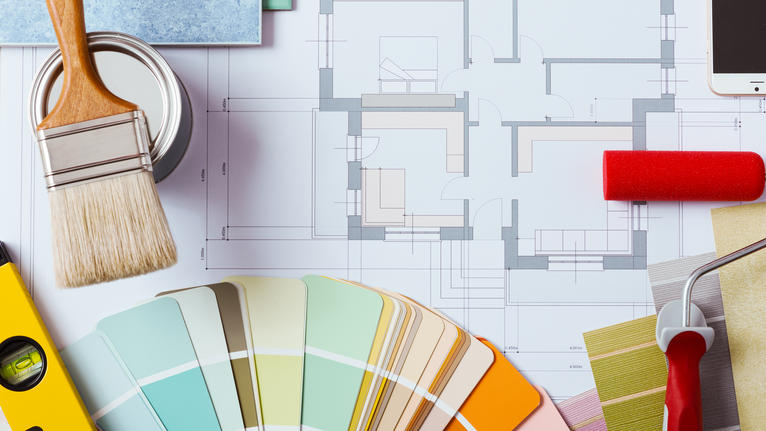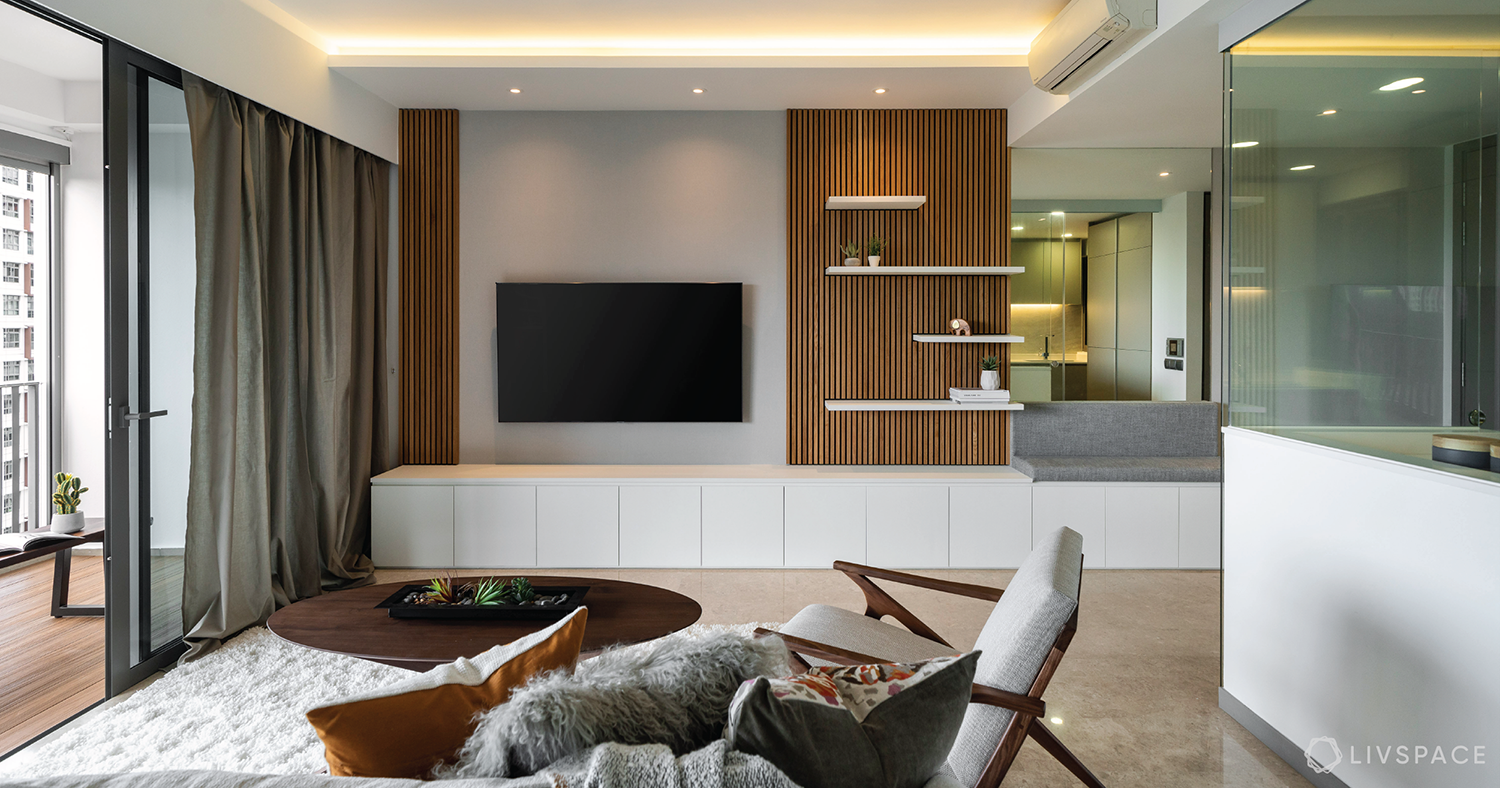Design Special Areas with Expert Interior Design Miami Techniques
Wiki Article
Why Understanding the Concepts of Interior Decoration Is Vital for Effective Room Planning
Understanding the concepts of indoor style is fundamental to effective area preparation, as it lays the groundwork for developing environments that balance functionality with aesthetic allure. Important aspects such as circulation, proportion, and balance are not simply attractive considerations; they are vital in optimizing how an area is made use of. When these principles are thoughtfully applied, the outcome is an ambience that encourages both productivity and wellness. Lots of forget just how these concepts intertwine with practical applications, leading to missed opportunities in design effectiveness. Exploring this connection exposes insights that might transform any type of area.Value of Area Planning
Room preparation is an essential aspect of interior decoration that substantially influences the functionality and looks of an area. It involves the strategic setup of furniture, fixtures, and building components to enhance making use of available space while enhancing the total customer experience. Reliable area planning addresses various elements, including flow, accessibility, and the specific demands of the occupants.Among the key advantages of room planning is its ability to boost spatial performance. Interior architecture Miami. By attentively organizing a layout, developers can ensure that every location offers an objective, decreasing clutter and promoting a feeling of order. Furthermore, correct room preparation fosters an unified environment, permitting for smooth activity and communication within an area
Furthermore, effective space planning thinks about natural light, sightlines, and the connection in between various areas. This alternative strategy not only elevates the visual allure but also adds to the health and productivity of the residents. Inevitably, a well-executed room plan is critical in developing a well balanced and welcoming atmosphere, making it necessary for any kind of indoor design project.
Secret Concepts of Inside Layout

One fundamental principle is balance, which can be balanced, asymmetrical, or radial. Symmetrical balance develops a feeling of order, while unbalanced balance uses a more vibrant visual charm. An additional essential concept is proportion and scale, guaranteeing that the dimension of furnishings and design components associate harmoniously to every various other and the total space.
Color theory also plays a considerable function, impacting state of mind and assumption. Developers make use of shade schemes to stimulate details sensations and boost the spatial experience. In addition, the concept of rhythm entails developing a feeling of activity via rep of shades, forms, or patterns, directing the eye throughout the area.
Finally, the concept of emphasis guides interest to centerpieces, enabling a clear story within the layout. Interior architecture Miami. By sticking to these essential principles, interior designers can create settings that not just meet functional demands however additionally reverberate with the residents on a psychological degree
Effect On Functionality and Circulation

The plan of furniture, the option of materials, and the assimilation of technology all play critical duties in attaining ideal performance. For example, putting seating areas in proximity to work spaces can facilitate interaction and cooperation, consequently improving efficiency. In addition, guaranteeing that pathways are clear and unobstructed enables for efficient movement, reducing blockage and advertising a natural flow throughout the room.
Additionally, integrating components such as lights and shade can better help in delineating locations, making it much easier for individuals to navigate their setting. Thoughtful room planning takes into consideration not only the physical elements of design yet likewise how customers interact with their environments. Ultimately, a concentrate on capability and circulation not only enhances the customer experience yet also raises the general performance of the room, creating an environment that meets the demands of its passengers while promoting a sense of consistency and equilibrium.
Enhancing Aesthetics and State Of Mind
Three crucial elements-- illumination, structure, and color-- play essential duties in boosting the visual appeals and mood of an interior area. Color establishes the emotional tone; warm colors like oranges and reds stimulate power and warmth, while cooler shades such as blues and environment-friendlies advertise peace and harmony. Picking an unified shade combination can change a room, developing a aesthetically attractive and cohesive atmosphere.Structure adds deepness and rate of interest, adding to the responsive experience within an area. A mix of textures-- smooth surfaces, luxurious textiles, and all-natural products-- can develop aesthetic intrigue and boost comfort. Pairing a soft velvet sofa with a sleek glass coffee table can produce a balanced aesthetic that welcomes communication.
Lighting, often an overlooked component, dramatically effects state of mind. Natural light fosters an open, airy ambience, while strategically placed synthetic lights can create heat and emphasize architectural features. Dimmer buttons make it possible for flexibility, allowing for modifications to suit various tasks or times of day.
Including these three components thoughtfully not just raises the visual site here charm of an area but likewise grows an environment that reverberates with its desired purpose, ultimately improving the overall experience for its occupants.
Practical Applications in Reality
Using interior decoration principles in the real world calls for a thoughtful approach that integrates color, texture, and illumination right into day-to-day spaces. By understanding exactly how these components function with each other, individuals can create atmospheres that are not just aesthetically enticing yet also functional and harmonious.For circumstances, in a tiny living location, employing a light color palette can make the space feel larger and a lot more open. Strategic use mirrors can boost all-natural light and create an illusion of depth. Incorporating various structures via textiles, such as pillows and rugs, can include heat and passion without overwhelming the senses.
Lighting plays a crucial function in specifying the environment. Split lighting, including ambient, task, and accent options, enables flexibility in state of mind settings. In an office, for instance, a combination of natural light, workdesk lamps, and ornamental components can increase productivity while preserving an inviting setting.
Additionally, understanding spatial partnerships and furnishings plan can cause boosted capability. By adhering to concepts such as balance and percentage, one can guarantee that rooms offer their designated purpose while remaining cosmetically pleasing. advice Generally, useful applications of interior decoration principles considerably boost the livability and charm of any setting.
Final Thought
To conclude, recognizing the principles of interior decoration is essential for reliable area preparation, as it promotes an equilibrium between capability and aesthetics. By using key ideas such as proportion, color concept, and flow, developers can create atmospheres that enhance both functionality and aesthetic charm. Inevitably, this knowledge adds to the development of areas that not just satisfy sensible requirements yet also raise the total environment, bring about more satisfying and efficient experiences for individuals.Recognizing the principles of interior layout is basic to effective area preparation, as it lays the foundation for creating atmospheres that integrate functionality with aesthetic charm.Room preparation is a fundamental element of indoor design that substantially affects the capability and aesthetic appeals of a room. In addition, proper space planning promotes an look at these guys unified setting, permitting for seamless movement and interaction within an area.
Furthermore, the concept of rhythm entails developing a feeling of movement through repetition of patterns, shapes, or shades, guiding the eye throughout the space.
In final thought, recognizing the concepts of interior design is essential for effective area planning, as it promotes an equilibrium in between performance and appearances.
Report this wiki page